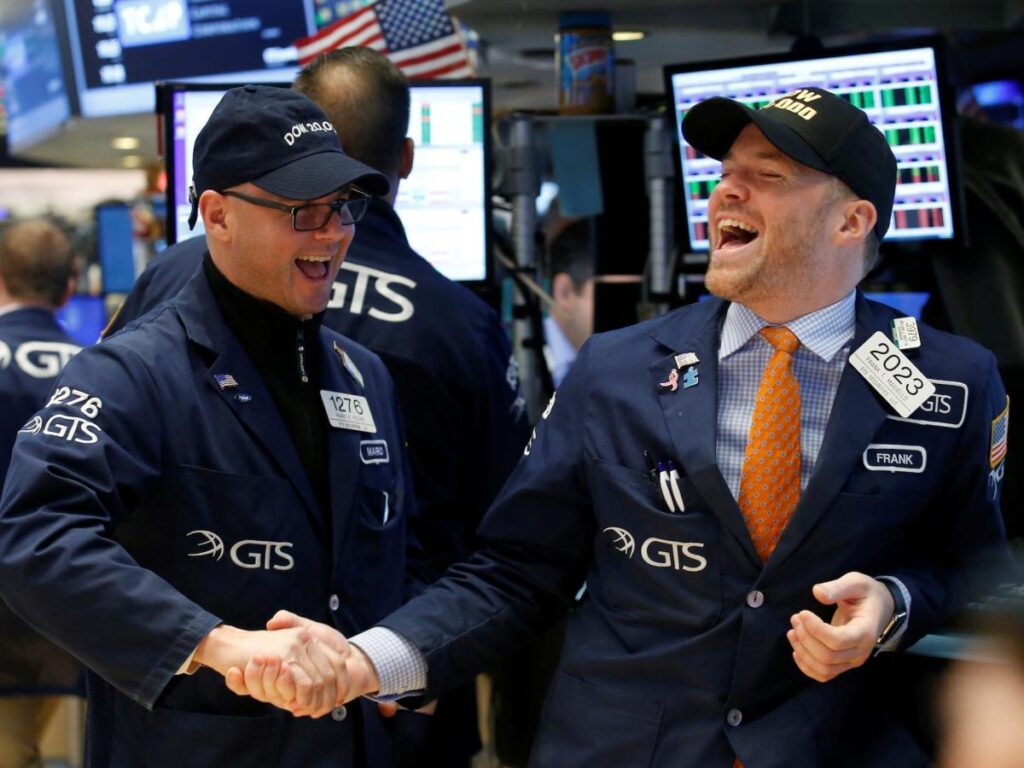-
The Dow Jones Industrial Average just reversed a bearish signal that flashed on Monday.
-
The bearish “death cross” that took place earlier this week was reversed into a bullish “golden cross” on Wednesday.
-
The moving average cross-over strategy is a lagging signal often used by traders and technical analysts.
The October CPI report sparked a big enough rally in the stock market this week to flash a bullish buy signal and reverse a short-lived technical sell signal that developed on Monday.
The Dow Jones Industrial Average flashed a bearish “death cross” on Monday for the first time since March 2022.
The “death cross” is a moving average crossover strategy employed by some traders and technical analysts as a signal to sell stocks. The signal occurs when the short-term 50-day moving average crosses below the long-term 200-day moving average.
The lagging indicator can help alert traders to securities that are solidifying their downtrend and are likely to experience a continuation with lower stock prices.
But a near 700 point rally in the Dow Jones Industrial Average since Monday was a big enough upside move to officially reverse the bearish death cross signal and spark a “golden cross” buy signal on Wednesday, according to data from Stockcharts.com.
The Dow Jones Industrial Average’s 50-day moving average rose to 33,827.04 on Wednesday, less than a full point above the Dow Jones’ 200-day moving average of 33,826.89.
The golden cross signal is the exact opposite of a death cross, occurring when the short-term 50-day moving average crosses above the long-term 200-day moving average.
The short-term whiplash between the buy and sell signals highlights the lagging nature of these moving average crossover strategies, which have a tendency to generate false signals.
In other words, sometimes it doesn’t pay to sell stocks after a bearish death cross or buy stocks after a bullish golden cross. In fact, a historical analysis by Fundstrat of S&P 500 death crosses revealed that it pays to buy stocks after a death cross, rather than sell.
“After 48 occurrences since 1929, the average return on a three-, six-, and 12-month timeframe were all positive for the S&P 500 with an average three-month return of 2.1%,” Fundstrat’s Mark Newton said last year. What’s more, the win rate for a positive return in the S&P 500 three, six, and 12 months after a death cross were all above 50%, according to the analysis.
And a historical analysis of bullish golden crosses that occurred in the Dow Jones since its inception in 1896 also highlights the potential for a false signal.
The technical buy indicator can sometimes be a head-fake as it has a success rate of 64%, according to data compiled by The Chart Report. Technical analyst Ian McMillan looked at a total of 81 golden crosses that occurred in the Dow Jones Industrial Average dating back to its inception in 1896.
McMillan found that on average, stocks were higher three months after a golden cross 62% of the time, and higher six months after the golden cross 64% of the time.
The average three-month return when stocks were higher after a golden cross was 7.33%, while the average return six months after the golden cross was 10.65%.
The lagging nature of the death cross and golden cross is the main reason why technical analyst Katie Stockton of Fairlead Strategies isn’t a fan of the moving average crossover signals.
“I am not a proponent of using moving average crossovers for market timing/predictive value. They are often untimely, and simply tell us what we already know, that momentum has shifted,” Stockton told Business Insider last year.
Stressing the importance that moving average crossover signals are not perfect, Ari Wald, head of technical analysis at Oppenheimer & Co., told The Chart Report, “All big rallies start with a golden cross, but not all golden crosses lead to a big rally.”
Read the original article on Business Insider
Read the full article here

